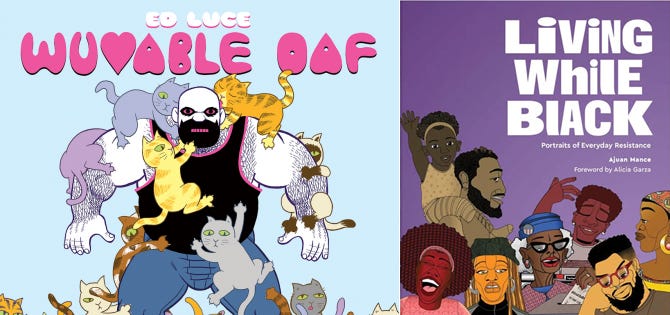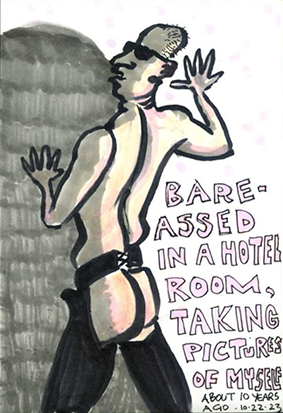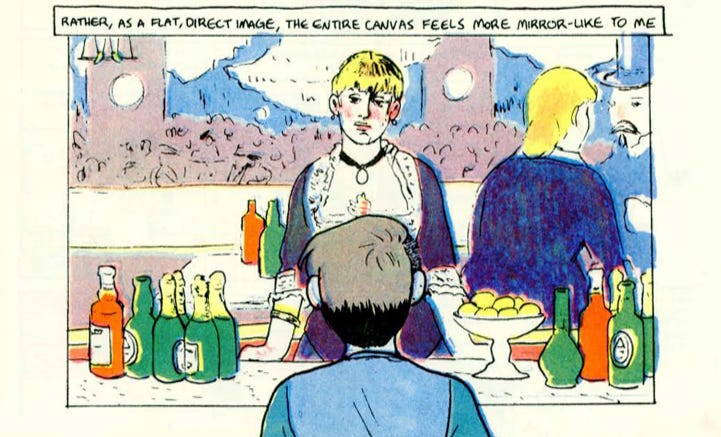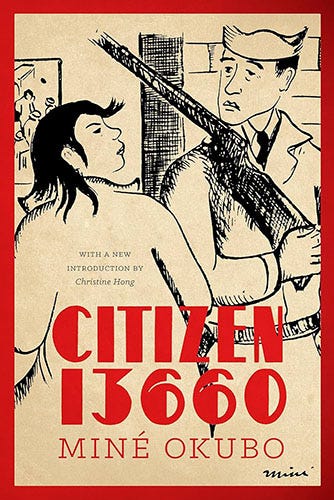JAM/Index Collective Interviews
This year we're supporting comics artists with the creation of Jam/Index, an artists' collective exploring, making, and exploding autobiographical comics and art.
WELCOME!
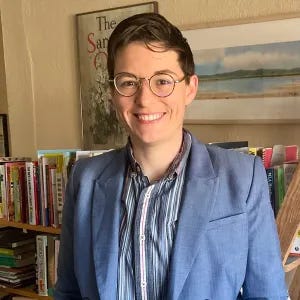


To Max Barnewitz, John Borstel & Athena Naylor, the three artists comprising Jam/Index, a 2025 Initiative by Dwightmess to support autobiographical comics & storytelling!
MAX BARNEWITZ
Max is a comics educator exploring queerness, transition in sequential art, often populating their storytelling with animals. They hold an MFA in Comics from California College of the Arts and an MA in Comparative Literary & Cultural Studies from the University of Utah. Max has taught many comics and zines workshops, and Digital Illustration at the University of Utah. Max currently teaches at the University of Maryland in the University Honors program as a Collegiate Fellow.
JOHN BORSTEL
John has described himself as an artist working at the crossroads of photography, performance, and text. For 20 years, John worked in programming and development for Dance Exchange, a nationally-touring contemporary dance company founded by MacArthur “Genius Grant” recipient Liz Lerman. In his own artwork, John practices "self-imaging," positing himself as both a medium and subject in various media. In John's words: "Some of my work synthesizes image and text. At the start, my biggest influence came from contemporary dance artists who combine spoken text with movement. In putting words and pictures together, I'm trying to do more than caption or explain. I hope to achieve a fusion of elements in which the specificity of language and the allusive quality of image each derives greater meaning by virtue of being placed together." See more by John Borstel»
ATHENA NAYLOR
Athena grew up in Milwaukee, Wisconsin and now lives and works in Washington, D.C. She specializes in autobiographical comics and illustration. Her work has been featured in Nat. Brut and The Washington Post, and in 2021 she received an Honorable Mention for the Chicago Alternative Comics Expo (CAKE) Cupcake Award.
See more by Athena Naylor»
INTERVIEWS: JAM/INDEX Collective
Follow interviews with these artists each week!
Max Barnewitz studied comics with artists such as Ed Luce and Ajuan Mance
DWIGHTMESS: From your bio it's clear that your art & comics stand for queerness, but also you've followed the art form to places like Toronto Comics Art Fair (TCAF) which brings to mind a slew of people and ideas. Could you name a few artists and perhaps some concepts you studied as you were getting your Masters that had a formative impact on your work?
MAX BARNEWITZ: I am so very fortunate to have studied with a group of gifted cartoonists at California College of the Arts! It's hard to know where to begin! I'll just list some of the many starting with my teachers Nicole J. Georges (Fetch, Calling Dr. Laura), Thi Bui (The Best We Could Do), Mel Gillman (As the Crow Flies), Ed Luce (Wuvable Oaf), Bishak Som (Apsara Engine), Justin Hall, Joyce Rice, GB Tran (Vietnamerica), Susannah Hanely, and Ajuan Mance. (The faculty was truly star-studded, my goodness!) As completely cheesy as it sounds, the absolutely necessary lesson I learned from these marvelous people is that there is a place for me to tell my story in comics. Comics is a medium where I belong; where queerness can come out, where experimentation and vulnerability can find expression. Before attending CCA (at the age of 30) I hadn't taken a true art class since high school! So alongside studying how to draft illustrations and tell a good story -- which I think I am still learning to do -- I learned that comics has always been a realm of the arts where folks with marginalized identities can find community. Being a part of the comics world has been an absolutely transformative experience.
Selection from “Daily Self-Portrait Project” by John Borstel
DWIGHTMESS: Again, for me the range of storytelling is what distinguishes your project from being comics. Part of that is how certain drawings for certain days are memories of something else, or point to a longer story, For instance, you very frequently reflect on the experience of being a gay man, and sometimes fetish costumes, or theatrical costumes are present. But then the card for the next day might be a musing on politics, a gag, a gripe, or revelation. The lack of continuity can be gripping and perhaps resemble the randomness of human experience more accurately. As the person simplifying his own stories and memories this way, is there any chance you might ever provide the audience with the full context from some of these drawings or no?
JOHN BORSTEL: I’m often trying to get an idea to its essence in these drawings, sometimes discovering that I can strip away a lot and still arrive at something that’s readable without much context. The daily portrait drawings are, in a way, random fragments detached from the context my life, and, as your excellent summary suggests, sometimes they’re reports of events, sometimes reactions or rants, sometimes fantasies, memories or dreams. And because they spend this incubation time in the void space of the closed box, often I myself can’t remember the context that spurred them, which actually adds to the fascination of the process for me. All that said, I’m not averse to sharing context and sometimes I’ll do that by adding a caption when I post the drawings to social media. But I’ve always felt that another person’s interpretation of my work is much more interesting than my intentions. In general I think artistic intentions are grossly overrated.
Panel from “The Checkout Counter” by Athena Naylor
DWIGHTMESS: Some of your comics are about art history and you also write about art. In a 2017 article that you wrote for DirtDMV, titled "Why Art Historians Shouldn't Ignore Comics," you quoted this article:
"Published on 5 July 2017, “Why Art Historians Still Ignore Comics” recounts Katherine Roeder’s 2008 essay “Looking High and Low at Comic Art,” and catalogs the obstacles art historians encounter when attempting to discuss comics. For example, comics’ hybridity as a medium, meaning its incorporation of both text and image, “leads experts to compartmentalize comics into literature or art.”
Since then, would you say this observation still holds? And if so, where do see this compartmentalization affecting your own work? If not, what avenues for the consumption and appreciation of comics would you say are flowering most effervescently at the moment?
Athena Naylor: This is a great question! And to be honest, I don’t have a definitive answer. To start, I think we need to agree that to compartmentalize comics into either literature or art doesn’t work– comics have their own unique visual language. But for either literature or art to ignore comics is also foolish, because comics influence and draw from both traditions. In the end, all these boundaries between the arts need to be more permeable, and I have seen some of that happening.
For starters, I have seen comics being represented a lot more in art museums, which is nice and fun for someone like me who loves comics and art museums! In 2021, the Museum of Contemporary Art in Chicago had a big exhibition focused on decades of local cartoonists, which was great and relevant considering Chicago’s reputation as an American comics hub. Last year, I also saw Ronald Wimberly’s work in the Columbus Art Museum, Columbus being another center for cartoonists with the Billy Ireland Cartoon Library and Museum. And locally, the Library of Congress has had several exhibitions and publications over the years highlighting the comics in their extensive collection.
Since 2017, I’ve also seen comics proliferate in newspapers and in magazines (both printed and online). I think there’s an increased understanding that comics can be a more accessible way for readers to learn about complex issues and current events. And in that way I think there’s a consensus that comics are worthy of critical analysis and appreciation.
But I also concede that I’m no longer embedded in an academic environment that would give me first hand access to how comics criticism is being approached. And I’m still disappointed in losses like the discontinuation of the Best American Comics anthology, which was published annually from 2006-2019. I’m curious for others to let me know how they think the general public considers comics as an art form today! I’m thoroughly in a bubble of like-minded creators who love comics for their expansive possibilities.
JAM/Index reminds you that THIS SATURDAY is 24-Hour Comics Day!
February 1st is Hourly Comic Day, which is a day for cartoonists and illustrators to draw a comic every hour that they are awake.
JAM/Index Recommends:
“Pictures of Belonging: Miki Hayakawa, Hisako Hibi, and Miné Okubo”
**If you’d like to find out what’s coming up at Dwightmess, visit our IG for the latest news»
**The Graffo Broadsheet is a reader-supported publication. To receive new posts and support Dwightmess Cartooning & Comic Arts Compound, consider becoming a free or paid subscriber.


